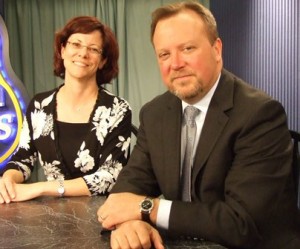By Paul Biddinger, M.D. and Mary-Elise Manuell, M.D.

The bombings at the Boston Marathon in April were a stark reminder that disasters and emergencies can occur with little or no warning. And while the numbers of deaths and injuries and degrees of destruction are different, the 2013 Marathon now joins a growing list of natural and man-made disasters — Hurricane Katrina, September 11, Superstorm Sandy, the bombings in Madrid and London, to name a few – that show just how important emergency preparedness is when contending with the unexpected and events beyond our control.
The medical community's reaction to the Marathon bombings has generally been given high marks: Victims received immediate aid, all injured patients were sent to hospitals in a timely manner, and everyone who went to a hospital survived. It serves as a good example of the importance of disaster medicine, a medical specialty that has become increasingly significant in recent years.
The successful response was the result of many factors. Disaster medicine has evolved over recent years to a “whole community approach,” with all relevant first responders and agencies — hospitals, police, fire, emergency medical systems, public health, and public safety — participating in extensive planning, coordination and practice. “Practice early, practice often” has become a catchphrase, supporting the need to routinely conduct exercises and drills directed at the capabilities needed to respond to different kinds of disasters – mass casualty events like bombings or shootings, hazardous material exposures, hurricanes or tornadoes, or hospital evacuations.
Learning from previous events and the experience of others is another critical element to effective disaster response. Battlefield experiences in Iraq and Afghanistan, for example, provided valuable lessons in life-saving techniques such as the use of tourniquets, and information shared by officials in Spain, Britain, Israel, and other nations that have lived through disasters further aided planning efforts.
Several other conditions helped as well. The Boston Athletic Association assembled a team of medical experts to care for needs associated with the race (as it does each year), and its medical tent was close to the area where the blasts occurred. Boston is fortunate to have six hospitals as designated trauma centers, all within short distances from the scene, and each received an approximate equal number of blast victims, thus preventing an overload of patients at any one site. The location and timing of the explosions – occurring near the medical tent and coinciding with a change in shifts in hospital emergency departments that resulted in more medical personnel being available to tend to the injured — also proved favorable.
One remarkable aspect of the day's events was the reaction by bystanders. There is always a potential risk to bystander responders, who may not fully assess “scene safety” in the same way professional rescuers do when unknown dangers may exist – but there's no question that the courage and quick actions of spectators and Marathon participants saved lives.
Despite the success of the response, no one perfect emergency plan exists, and the practice of disaster medicine demands constant examination. Responses to the Marathon bombings are already undergoing evaluation to see what might be done better when the next emergency happens.
Every emergency simply can's be foreseen. The when and where and type and intensity of disasters often defy prediction, and each event will have its own challenging set of characteristics and conditions – which means disaster professionals will continue to plan, practice, and learn.
Emergency preparedness, however, shouldn's be confined to the professionals; individual citizens should be engaged as well. The better prepared people are, the less likely it is they will need help, and the better prepared their communities will be. The website www.ready.gov has a wealth of information on how to create an emergency plan and build a disaster kit, and what to do before, during, and after emergencies. Learning techniques that can save lives, like basic first aid, is also valuable, as the Boston experience showed.
For those who might like to play a larger role, volunteer opportunities, both medical and non-medical, are available on local community response teams to assist during health-related emergencies. To find out how to help, visit www.maresponds.org? And to learn more about the practice of disaster medicine, visit www.physicianfocus.org/disastermedicine
Paul Biddinger, M.D. is Chief of the Division of Emergency Preparedness at Massachusetts General Hospital in Boston, and Mary-Elise Manuell, M.D. is Director of the Division of Disaster Medicine and Emergency Management at UMass Memorial Medical Center in Worcester. Physician Focus is a public service of the Massachusetts Medical Society. Readers should use their own judgment when seeking medical care and consult with their physician for treatment. Send comments to [email protected]?














